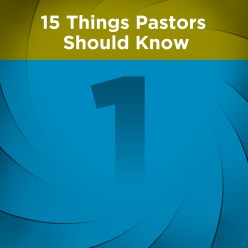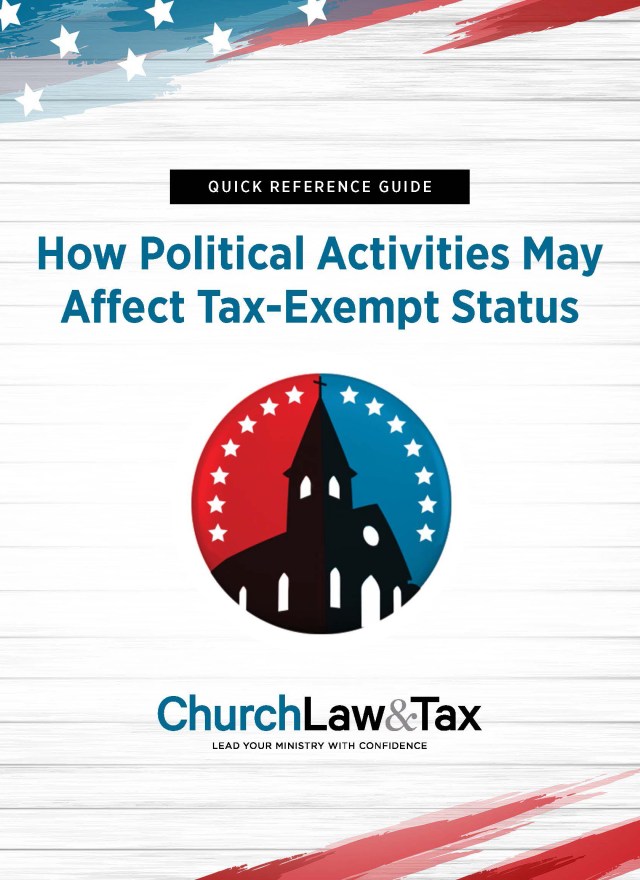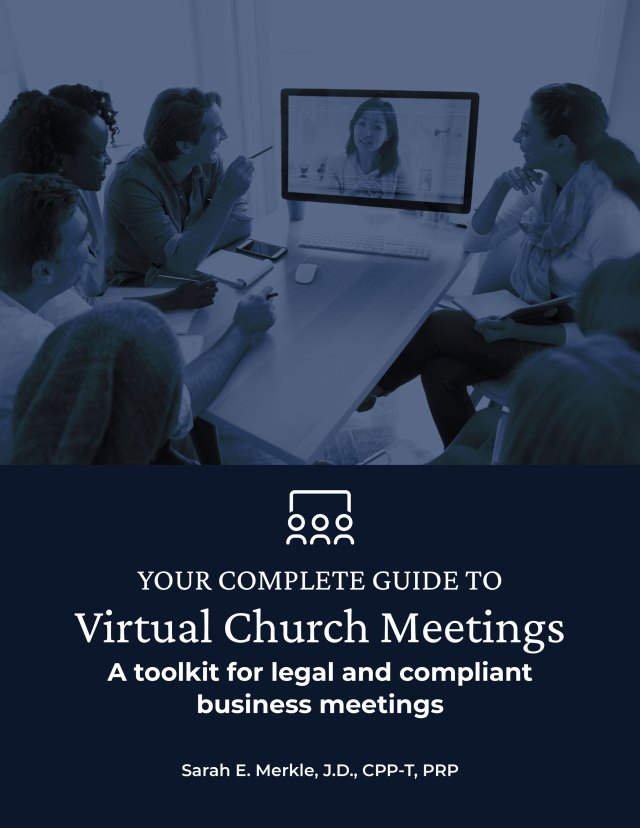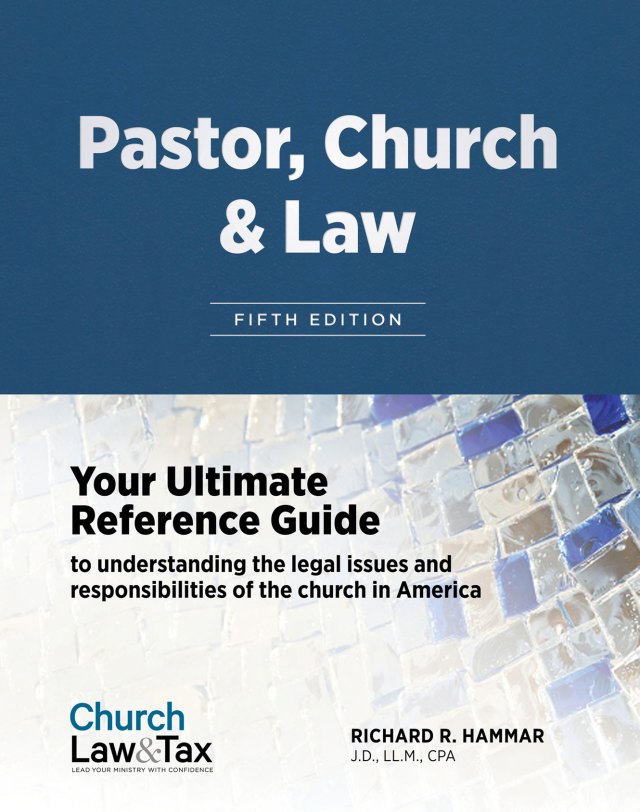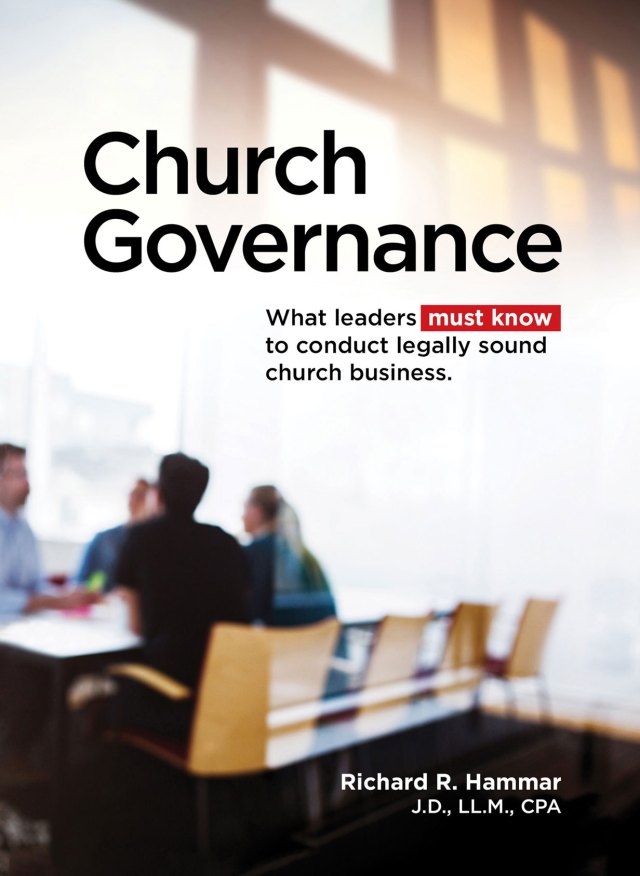A church’s governing documents include a corporate charter and a constitution or bylaws (sometimes both). The lead minister should be familiar with these documents and be able to identify the current version. There are several aspects of governing documents ministers should understand, including the following.
Bylaw basics: What are church bylaws?
The Model Nonprofit Corporations Act (3rd ed. 2008), which has been adopted by several states, defines bylaws as “the code or codes of rules (other than the articles of incorporation) adopted for the regulation and governance of the internal affairs of the nonprofit corporation, regardless of the name or names used to refer to those rules.”
One court defined bylaws as follows:
The bylaws of a corporation are the rules of law for its government. The term “bylaw” may be further defined according to its function, which is to prescribe the rights and duties of the members with reference to the internal government of the corporation, the management of its affairs, and the rights and duties existing among the members. Bylaws are self-imposed rules, resulting from an agreement or contract between the corporation and its members to conduct the corporate business in a particular way. Until repealed, bylaws are the continuing rule for the government of the corporation and its officers. Schraft v. Leis, 686 P.2d 865 (Kan. 1984).
Know your current version of your bylaws
In many churches, the bylaws were adopted long ago, and have been amended numerous times over the years. As a result, there may be various “editions” in circulation. Often, these editions are undated, making it difficult (if not impossible) to identify the current one. This can create confusion.
Going forward, here are two ways to prevent confusion over which set of bylaws is the current edition:
- Identify copies of the church bylaws with a numeric designation. To illustrate, a church identifies its current bylaws as “version 1.0.” During the church’s membership meeting, two amendments are made to the bylaws. Following the meeting, the revised bylaws are printed, and designated as “version 1.1.”
- Identify copies of the church bylaws by date. For example, designate the current bylaws “Current as of [date].”
In either case, be sure that all printed copies of the bylaws bear the appropriate designation, and dispose of undesignated versions.
Do churches need both a constitution and bylaws?
Some churches have both a constitution and bylaws. This was a common practice a century ago, and it persists to this day. But there is little justification for a church to have both a constitution and bylaws unless the constitution is made superior to the bylaws either by express provision or by a more restrictive amendment procedure.
To illustrate, some churches have:
(1) a constitution that can only be amended by providing members with advance notice of the proposed amendment prior to a membership meeting, and by a two-thirds vote of the membership at the meeting; and
(2) bylaws that can be amended at a membership meeting, without prior notice to the members, and by a simple majority vote. The church places provisions of greatest importance in the constitution, such as church doctrine and the purchase or sale of church assets, since these can be changed only through a more deliberative process involving advance notice and a super-majority vote. Routine provisions are assigned to the bylaws.
Churches that have both a constitution and bylaws typically address many of the same issues in both documents. Over time, this often leads to conflicts, since amendments in one document may not be made to similar provisions in the other.
Identifying a single body of rules as the “constitution and bylaws” without any attempt to distinguish between the two is a common but inappropriate practice.
Provisions you may want to include in your bylaws
There are a number of potentially helpful provisions that are often omitted from church bylaws, including:
- An arbitration or mediation provision requiring specified disputes to be resolved through mediation or binding arbitration.
- Choice of parliamentary law to govern membership meetings. Many church leaders assume that Robert’s Rules of Order Newly Revised governs church business meetings. But this is not the case. There are dozens of competing models of parliamentary procedure, and a church should formally select the model that will be applied. If your church intends to use Robert’s Rules of Order Newly Revised, then your bylaws should say so.
- If your church bylaws contain a provision addressing the discipline of members who violate your standards of membership, they should clarify that members who have been charged with conduct in violation of the standards of membership waive their right to resign from membership in the church. Without such a provision, members can preempt a church’s disciplinary procedure by simply informing their pastor that they are resigning as members. Guinn v. Church of Christ, 775 P.2d 766 (Okla. 1989).
- A clause specifying how contracts and other legal documents are to be approved.
- State who has the authority to sign church checks. It is a basic tenet of internal control that two persons sign checks, and a church’s bylaws should specify which two officers have this authority.
- “Bonding” of officers and employees who handle church funds.
- An annual audit by independent certified public accountants (CPAs). There are compelling reasons why a church should consider having an annual audit. Most importantly, an audit promotes an environment of accountability in which opportunities for embezzlement (and therefore the risk of embezzlement) are reduced. And, the CPAs who conduct the audit will provide the church leadership with a “management letter” that points out weaknesses and inefficiencies in the church’s accounting and financial procedures. This information can be invaluable to church leaders. Smaller churches that cannot afford a full audit may want to consider two other options: (1) Hire a CPA to conduct a review, which is a simpler and less expensive procedure. If the review detects irregularities, a full audit may be considered worth the price. (2) Create an internal audit committee if there are accountants or business leaders within the church who have the ability to review accounting procedures and practices and look for weaknesses. These people often are very familiar with sound internal control policies, and will quickly correct weaknesses in the church’s financial operations.
- An indemnification clause providing for the indemnification of officers and directors who are sued as a result of actions or decisions made in the course of performing their duties on behalf of the church.
- Specification of the church’s fiscal year.
- “Staggered voting” of directors (a portion of the board is elected each year to ensure year-to-year continuity of leadership).
- The bylaws should specify if the church board can act without conducting a formal meeting. To illustrate, section 8.21 of the Model Nonprofit Corporation Bylaws, which has been adopted by several states, specifies that “except to the extent that the articles of incorporation or bylaws require that action by the board of directors be taken at a meeting, action required or permitted to be taken by the board of directors may be taken without a meeting if each director signs a consent in the form of a record describing the action to be taken and delivers it to the nonprofit corporation. . . . A consent signed under this section has the effect of action taken at a meeting of the board of directors and may be described as such in any document.”
- The bylaws should authorize the church board to conduct meetings by telephone or a video conference, or allow the “attendance” of an otherwise absent director through telephone connection or video conference, if desired.
- The bylaws should specify if absentee voting is permitted at membership meetings. Absentee voting is not ordinarily permitted unless expressly authorized by an organization’s bylaws. Robert’s Rules of Order Newly Revised specifies: “It is a fundamental principle of parliamentary law that the right to vote is limited to the members of an organization who are actually present at the time the vote is taken in a legal meeting. Exceptions to this rule must be expressly stated in the bylaws. . . . An organization should never adopt a bylaw permitting a question to be decided by a voting procedure in which the votes of persons who attend a meeting are counted together with ballots mailed in by absentees, since in practice such a procedure is likely to be unfair.”
- The bylaws should specify if proxy voting is permitted at membership meetings.
- State who is authorized to have custody of the minutes of church membership and board meetings.
- State who is authorized to have custody of the church’s financial records. These documents are church records, and ordinarily should not be entrusted to the treasurer’s personal possession.
- Most state nonprofit corporation laws give members a right to inspect specified corporate records at a proper time and for a proper purpose. Usually, these laws provide that this authority to inspect corporate records exists unless limited or abolished by the corporate bylaws. To illustrate, the Revised Model Nonprofit Corporation Act, which has been enacted by several states, gives a member a right to inspect the minutes of board meetings if the member’s demand is made in good faith and for a proper purpose; the member describes with “reasonable particularity” the purpose and the records the member desires to inspect; and the records are directly connected with this purpose. The Act specifies that a church’s articles of incorporation or bylaws “may limit or abolish the right of a member under this section to inspect and copy any corporate record.”
- Clarify the meaning of all voting requirements specified in the bylaws. For example, a church’s bylaws may call for a “two-thirds vote” for certain actions. This can have various meanings, including a vote that is precisely two-thirds of the membership; at least two-thirds of the total voting membership, regardless of how many come to a business meeting; or, at least two-thirds of the members present at a duly called meeting at which a quorum is present. This kind of ambiguity has caused countless internal church disputes.
- Suspension or removal of board members who miss a specified number of board meetings. Board members owe various “fiduciary duties” to their church, and one of these is the duty to exercise “due care” in the performance of their responsibilities. Board members who miss most board meetings eventually will be in violation of this duty, and some churches have chosen to address this issue in their bylaws with a provision calling for the suspension or removal of such persons. The fiduciary duty of due care goes to the very heart of the status of a board member.
- It is common for church board members to resign their position when they relocate or become incapacitated. However, church bylaws usually do not address when and how such resignations will occur. This is an important and frequently overlooked issue, since board members generally remain liable for the actions of the board until their resignation is effective. If the timing of a resignation is ambiguous, then this can create lingering exposure to liability. To avoid this, a church’s bylaws should clarify precisely how and when a board member’s resignation will be effective.
Seek legal assistance. The drafting of church bylaws is a complex task that should not be attempted without the assistance of an attorney. Knowing what to include and exclude from your bylaws are important tasks that require legal knowledge and experience.
Is it time to rewrite our bylaws?
Do church bylaws ever need to be rewritten? That depends on several factors, including the following:
- How old are the bylaws? The older they are, the more likely they are in need of a legal review, and possibly revisions or a new and updated document.
- Who drafted the bylaws? If the bylaws were drafted by one or more attorneys with experience in corporate governance, ideally involving churches or other nonprofit organization, there is less need to rewrite the bylaws. On the other hand, many churches have bylaws that were drafted by a committee of laypersons with little if any specialized knowledge in corporate governance. In such a case, there may be a greater need for revisions or a new document.
- Some church bylaws are mandated by the denomination with which they are affiliated, and the church has little if any authority to make changes. Church leaders should be familiar with any such limitations.
The application of denominational governing documents
In many denominations, affiliated churches are limited in their ability to compose or revise their bylaws. In some cases, the church’s bylaws are entirely prescribed by the denomination’s governing documents. In others, the church is free to compose its own bylaws, but must include terms mandated by the denomination’s governing document. As one court noted, “For religious nonprofit corporations, bylaws may partly be prescribed by, and may be an important tie to, a related superior or affiliated religious organization.” New v. Kroeger, 84 Cal.Rptr.3d 464 (Cal. App. 2008).
Church charters
The application for incorporation that is filed with the secretary of state generally is called the articles of incorporation or articles of agreement. This document, when approved and certified by the appropriate government official, is commonly referred to as the corporate charter.
Church charters typically set forth the following information:
- corporate name
- corporate address
- period of duration
- purposes of the corporation
- names and addresses of incorporators and directors
Additional Reading
For deeper readings on bylaws, charters, and other areas related to governing a church, see the following:
- Church Governance: What Leaders Must Know to Conduct Legally Sound Church Business
- Pastor, Church & Law (in the legal library, or purchase the book from the Church Law & Tax Store)
- “Q&A: Is It Ever Okay to Break Our Church’s Bylaw Notification Requirement?”
- “Church Board’s Attempts to Amend Articles of Incorporation Ruled Invalid”
Go to the next article, “Parliamentary Procedure” or return to “15 Things Richard Hammar Wants Pastors to Know,” to choose an article of interest or that fits a particular need.
